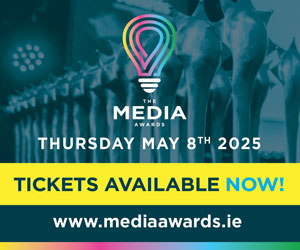 Used properly, viral marketing and advertising can reap many rewards for your brand, writes Ian McGrath.
Used properly, viral marketing and advertising can reap many rewards for your brand, writes Ian McGrath.
When did it become such a virtue for marketers not to spend money on advertising?
Viral campaigns tend to be more celebrated, claim to have more connection with people, and win more awards. Typically, they are positioned as a clever alternative to broader marketing campaigns.
But, on their own, viral campaigns may not make as much business sense as a multi-media campaign.
Why suppress a campaign idea if it is creative, based on a simple human truth, tells a good story?
Reach is a key metric in successful marketing.
Reach is proven to positively influence immediate sales and, when delivered consistently over time, brand effects and future sales considerations.
Use it!
Of course, viral campaigns have some reach. Otherwise, nobody would talk about or share them, and they wouldn’t catch.
But this reach is capped versus its full potential, and it comes with a greater element of risk.
Capping Total Campaign Reach
Viral campaigns do not deliver the consistent reach as ad campaigns. The content of a viral campaign and an ad campaign are different, but both are generally targeting the same audiences, and both work off the same formula to connect with people.
Be interesting, create likeability, and be distinctively branded.
Ad campaigns by their nature are not discreet and deliver larger audiences, over a more consistent timeline.
Ad campaigns have never worked in competition with word-of-mouth (WOM). Typically, they enhance it. Much of the creative and media best practice should be applied to content development, learning from attention tracking, contextual targeting, to a move beyond reporting metrics will all improve a brand’s content.
The most important part of Brand Fame, as detailed by Peter Field, is “Universal Meaning”, and this comes when more people know about your brand and your campaigns.
Losing the Duration of Campaign Reach
Viral campaigns, on their own, are also short-lived with a faster decay rate than advertising (on average trending for 2-3 weeks). When they work, they typically have a sharp and sudden impact. While this has a positive impact on brand perception, it does not deliver the top-of-mind top-up that advertising delivers to maintain a saliency across 52 weeks of the year or whatever duration the buying journey is.
Increasingly brand discovery in search engines and social networks is driven by high quality content, relationships, and authority. This takes a long-term commitment.
Often the success metrics for viral campaigns would be optimised ahead of this, which helps short-term, but hurts long-term.
Less Predictable Campaign Reach
Viral hits are rare and unpredictable. In his book, “Hit Makers”, Derek Thompson outlined the three elements of success being one or a mix of a surprising hit of exposure, a perception of popularity, and some cultural controversy.
Clearly the lesson is there is no framework for viral success.
Viral campaigns are more susceptible to fraud and to slip into unsafe brand environments. Sometimes they need to be partnered with a reaction plan, particularly as the opinions become more polarised across audiences.
They are also more difficult to measure, due to the limited timeframe of them trending. Meaning the campaign learning will be more difficult to apply to future planning.
Biggest Risk of All
Championing the viral campaigns above multi-channel campaigns appears to put marketing into a cost bucket, rather than an investment one.
Its ‘we did all this without spending any money on media’ but should have been ‘we were able to take this great idea and reach this many people in relevant ways across the buying journey to deliver X and Y’.
It’s a focus on cost and not opportunity cost. Which is a particular issue as marketing takes less share as a percentage of revenue.
Virality Does Work
Virality is perhaps the biggest glory metric in marketing. Like most things that champions a means rather than an end.
It doesn’t work as a communications channel on its own.
Viral = Vanity.
Multi-Media = Profit.
Viral marketing works when planned tactically as part of a wider multi-media strategy designed to reach as many potential customers consistently as possible; to be interesting and distinctive to improve brand perceptions; and aligned to measurable business outcomes.
Ian McGrath is Chief Operations Officer Media, dentsu Ireland.























